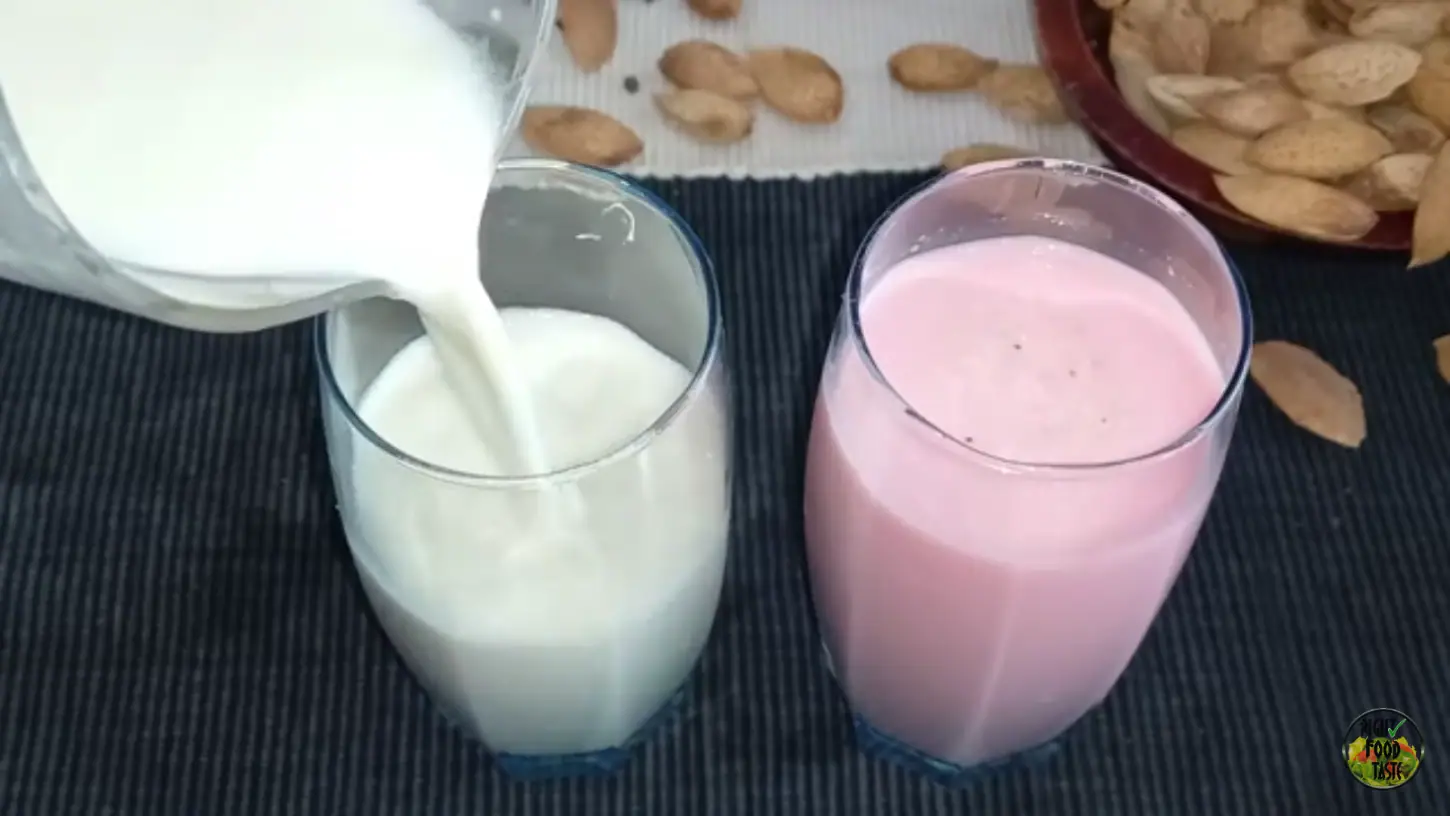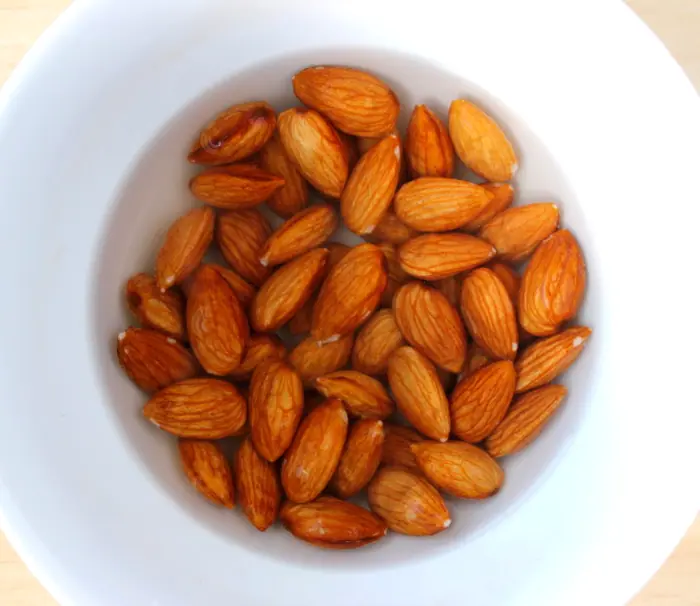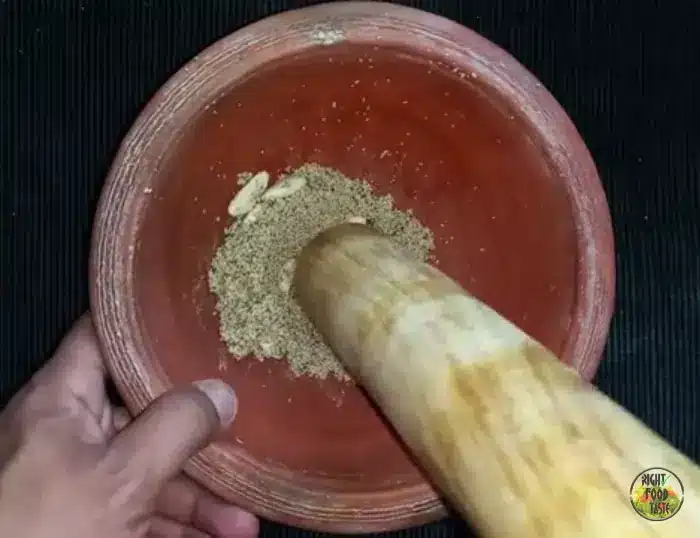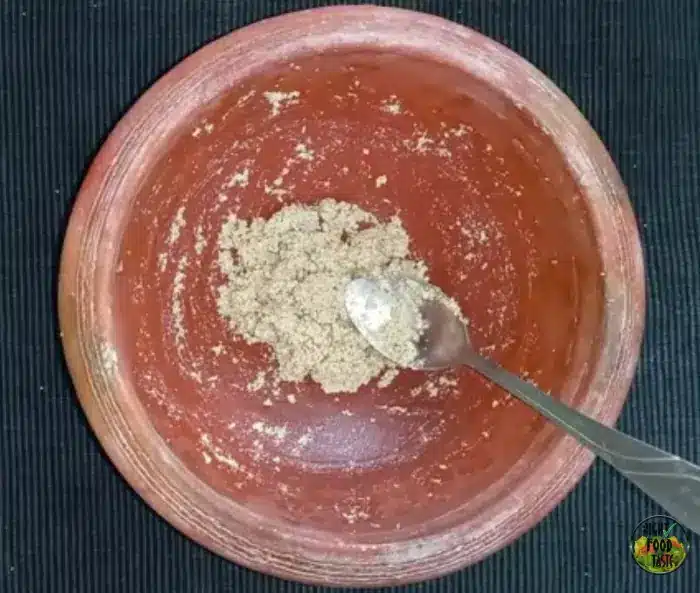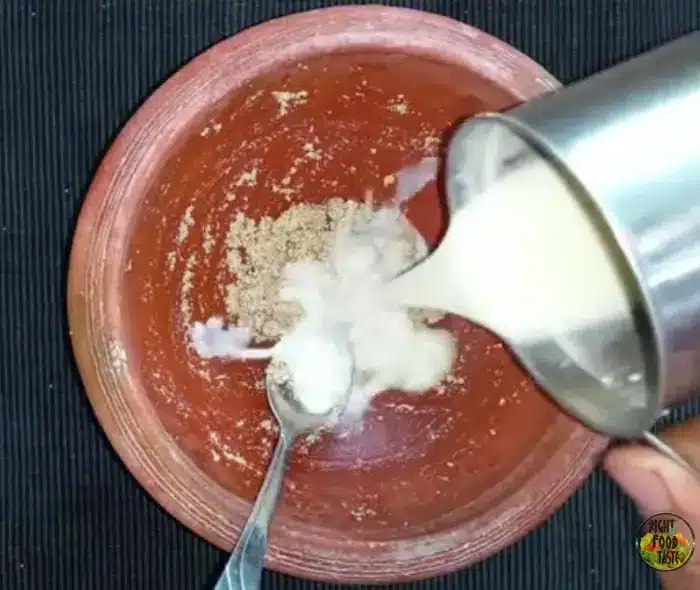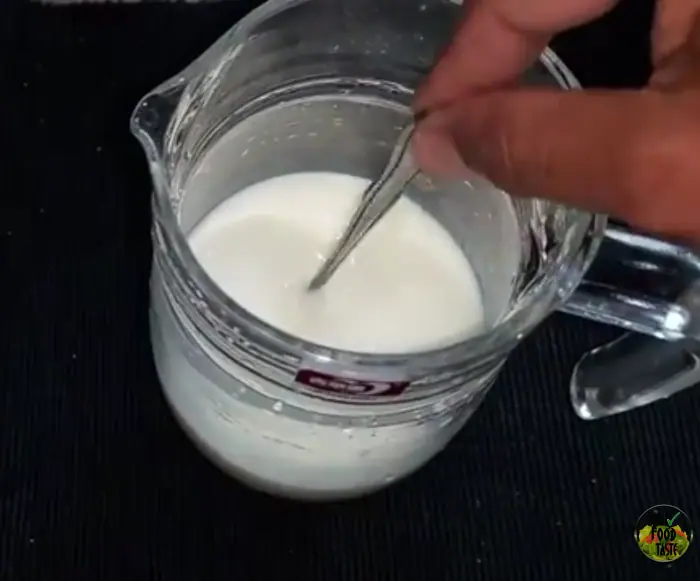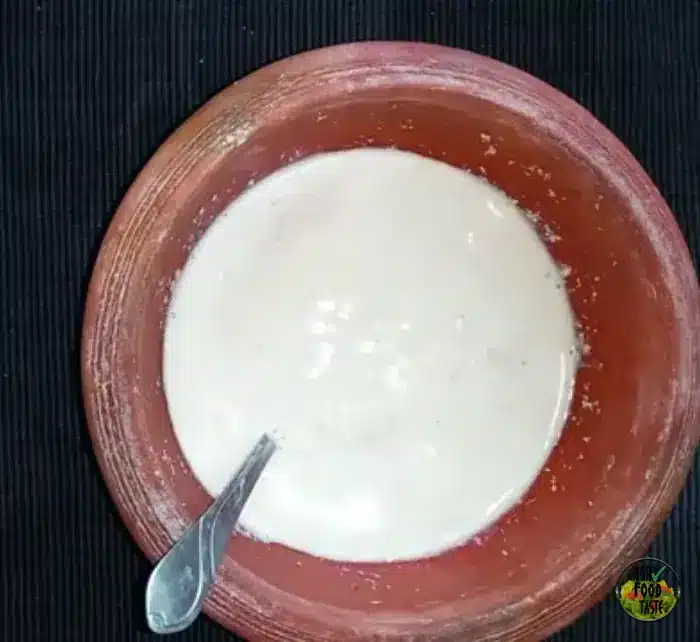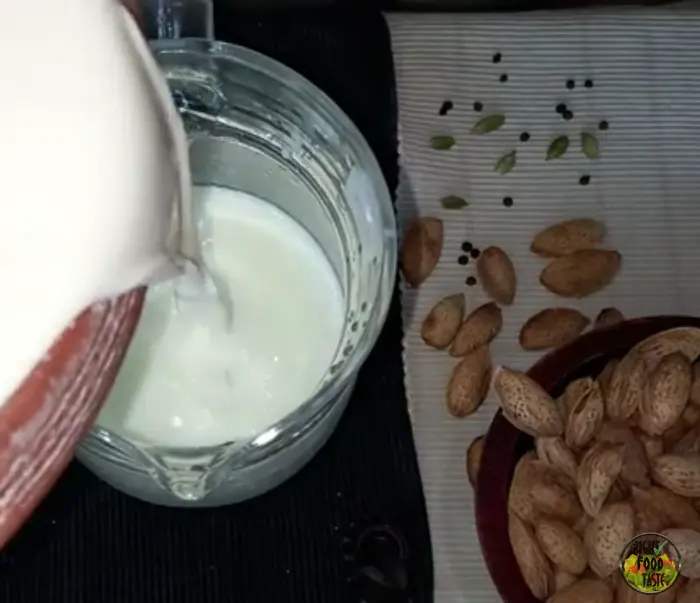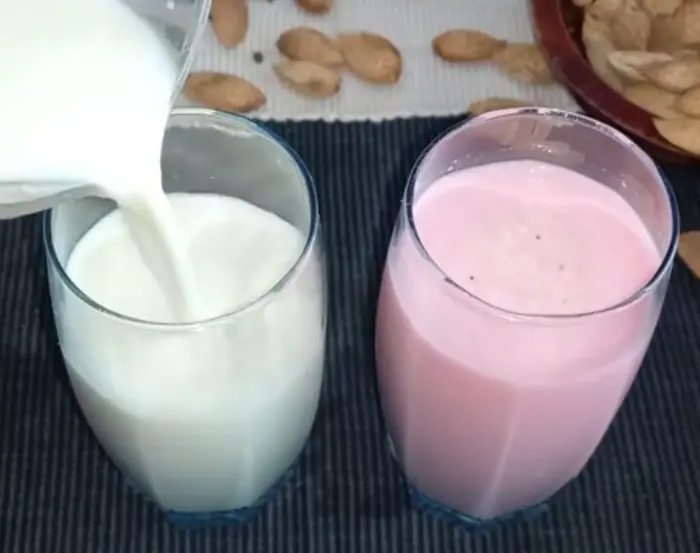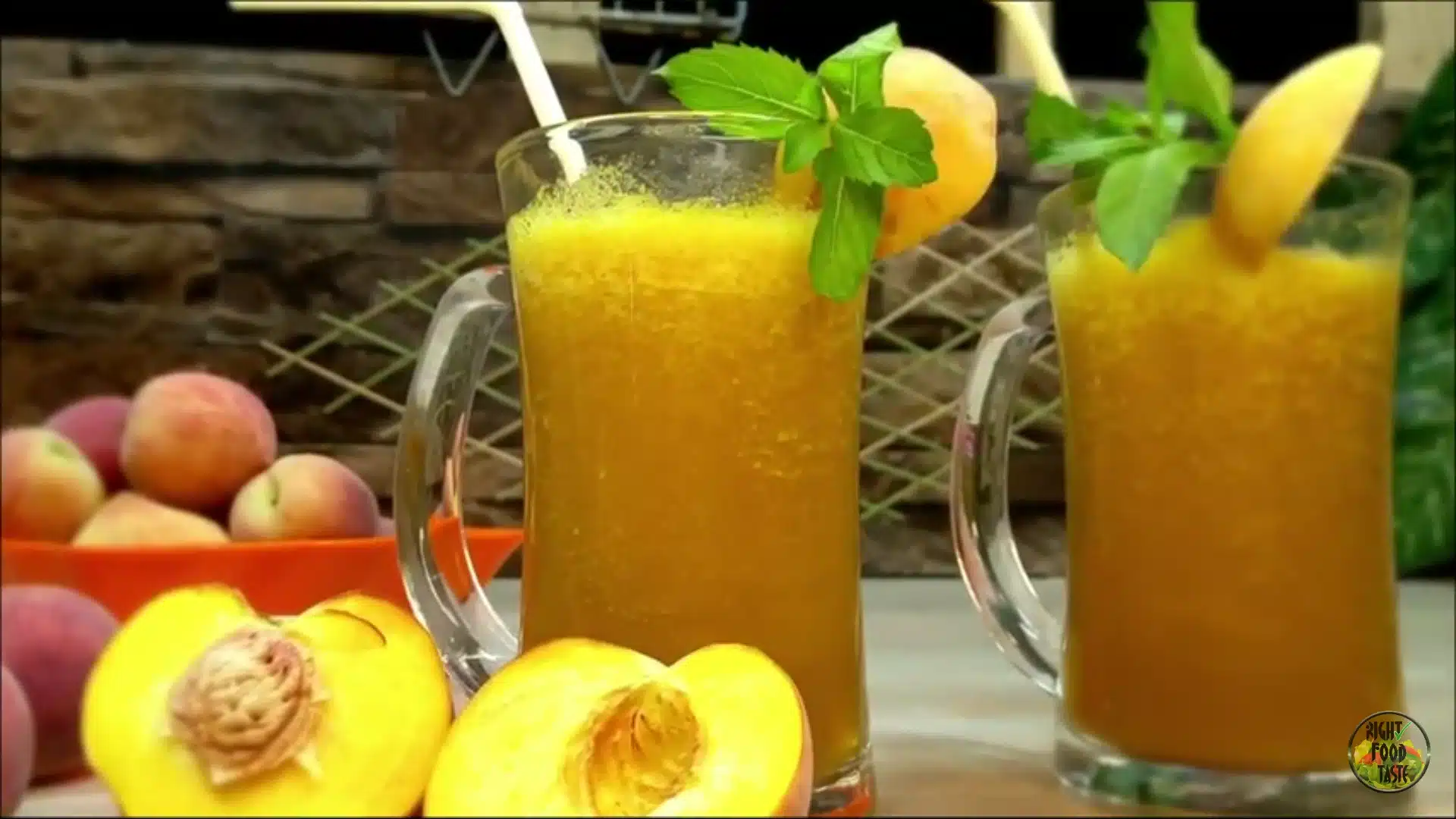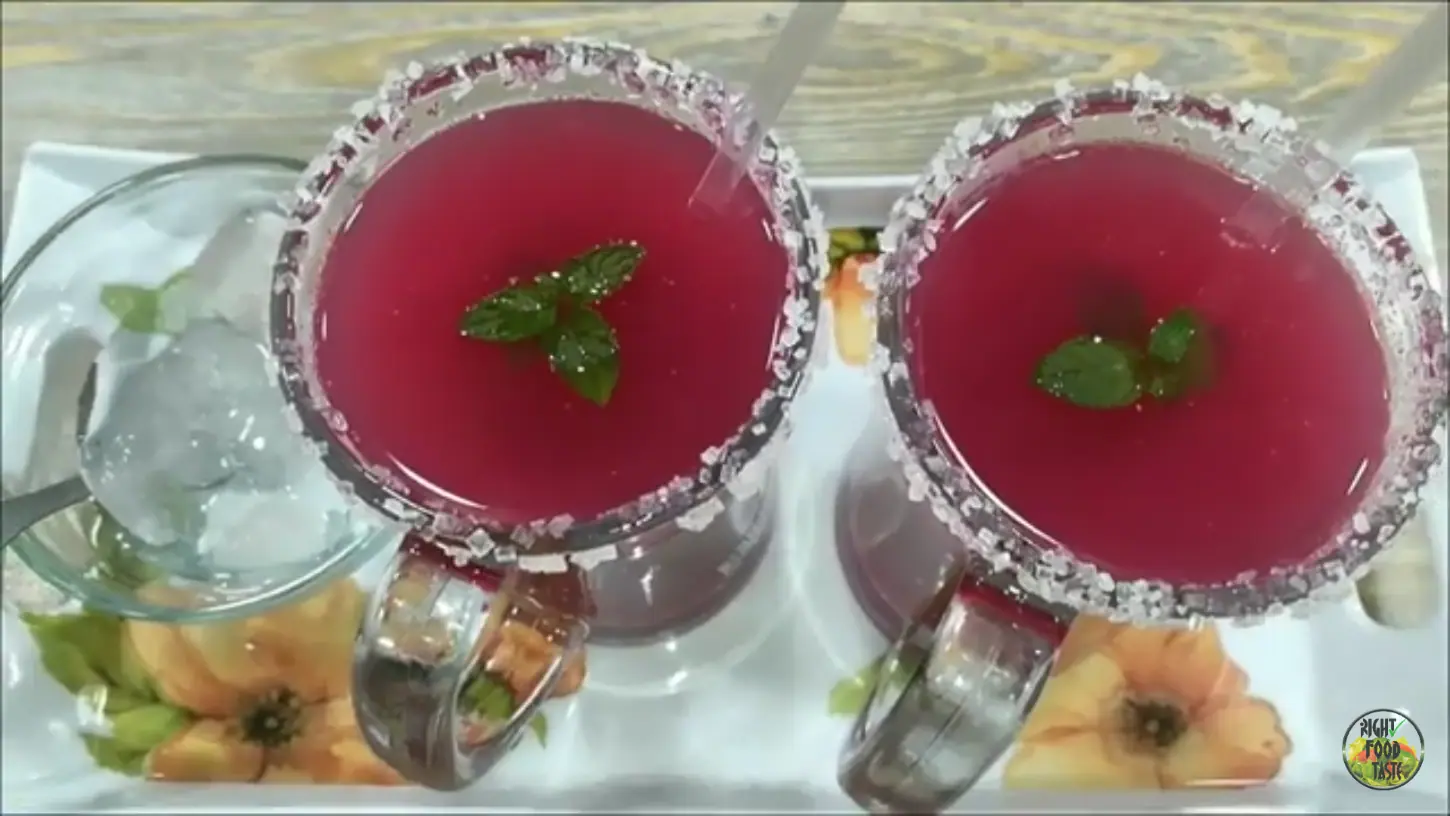With our meticulously curated Thandai recipe, you can create a traditional Indian drink that holds a special place in the hearts of people. With its refreshing blend of flavors and unique ingredients, thandai has become a popular choice not only during festive occasions but also as a soothing beverage to beat the scorching summer heat.
This refreshing traditional delight reduces the intensity of thirst throughout the day, refreshes the heart and mind and makes the beverage a great summer gift.
In our quest to share culinary delights, we bring you a refreshing twist on this traditional favorite – Thandai or Sardai. Prepare yourself for a journey of flavors and aromas as we unveil our meticulously curated Thandai recipe.
From its rich history to the step-by-step recipe, variations, and health benefits, you’ll discover everything you need to know about this popular beverage. Get ready to indulge in this flavorful concoction that will leave you feeling rejuvenated and revitalized.
What is Thandai or Sardai?
Thandai, also known as Sardai, is a cool and creamy drink that originated in the Indian subcontinent and is particularly popular in India and Pakistan. The term “Thandai” literally translates to “cooling”, which aptly describes the drink’s purpose – to beat the scorching heat during summer and provide a rejuvenating experience.
Primarily, people consume this beverage during the hot summer months and it holds cultural significance in Indian festivals, especially during Holi, the festival of colors. Yet, we can enjoy it all year round. Thandai is made with a blend of aromatic spices, nuts, and seeds, which are mixed with milk to create a flavorful and refreshing drink.
It is usually served chilled and offers a burst of flavors that dance on your palate. The velvety texture and unique taste of Thandai make it a favorite among people of all ages.
Thandai’s Historical and Cultural Significance
Thandai, a popular Indian drink, has been cherished for centuries, particularly during festive celebrations like Holi and Shivratri. This invigorating beverage originated in the northern regions of India, where scorching summers demanded a refreshing elixir.
This beverage carries a deep historical and cultural significance, dating back to ancient times. It is believed to have been first prepared in the region of Uttar Pradesh in India during the Mughal era. The Mughal emperors were known for their love of good food and exquisite drinks, and Thandai was one such creation.
Over time, Thandai gained popularity and made its way to different parts of the Indian subcontinent, including Pakistan, where it became an integral part of the local cuisine. Thandai symbolizes joy, togetherness, and the richness of traditions.
Traditional Ingredients of Thandai Recipe
Our Thandai recipe is a delicate blend of aromatic spices, nuts, and dairy, carefully selected to create a harmonious symphony of flavors and texture. Each ingredient plays a vital role in achieving the perfect balance and ensuring an unforgettable taste experience.
The traditional recipe includes almonds, pistachios, cashews, poppy seeds, melon seeds, fennel seeds, black peppercorns, cardamom pods, rose petals, saffron, and sugar.
Let’s take a closer look at these components:
Milk in Thandai (Sardai)
A key ingredient in thandai, milk forms the base of Thandai and provides a creamy and luscious texture to the drink. We recommend using full-fat milk for the best results.
Nuts and Seeds in Thandai Recipe
Thandai incorporates a mixture of nuts and seeds, including almonds, cashews, pistachios, melon seeds, and poppy seeds. These ingredients add richness and a subtle nutty flavor to the beverage.
Almonds: The Nutty Indulgence
Almonds, rich in essential nutrients and healthy fats, form the heart of our Thandai recipe. These delectable nuts lend a creamy texture and a subtle nutty undertone to the drink, enhancing its overall appeal.
Cashews: Creaminess Redefined
To elevate the creaminess factor, we incorporate cashews into our Thandai recipe. These buttery and slightly sweet nuts complement the almonds, adding depth to the flavor profile and lending a velvety smoothness to each sip.
Melon Seeds: A Surprising Twist
Melon seeds, also known as magaz, are often an underrated ingredient, bringing a unique twist to our Thandai recipe. These tiny powerhouses of nutrition impart a delicate nutty flavor, while their subtle crunch creates an intriguing textural contrast.
Poppy Seeds: Earthy Elegance
Poppy seeds, known for their distinctive nutty and earthy taste, provide a subtle complexity to our Thandai. These tiny black gems add depth and a hint of bitterness that balances the sweetness of the other ingredients.
Spices and flavorings in Thandai Recipe
Thandai gets its distinct flavor from a blend of aromatic spices. The most commonly used spices include cardamom, fennel seeds, black pepper, and saffron, each adding its own unique touch to the drink.
Fennel Seeds: Aromatic Delight
Fennel seeds, celebrated for their aromatic properties, infuse our Thandai with a refreshing and slightly sweet essence. Their unique flavor profile enhances the overall sensory experience, leaving you craving for another sip.
Cardamom: Fragrant Bliss
Cardamom, the “Queen of Spices,” reigns supreme in our Thandai recipe. Its enchanting aroma and warm, slightly citrusy flavor elevate the drink to new heights, transporting you to a realm of pure indulgence.
Saffron: The Golden Touch
To add a touch of opulence and elegance, we embrace saffron, the world’s most expensive spice. Just a few strands of this exquisite ingredient lend a vibrant golden hue and a subtle floral note, transforming our Thandai into a visual and gustatory delight.
Rosewater: Fragrant Petals
No Thandai recipe is complete without the fragrant essence of rosewater. Delicately extracted from rose petals, this floral component imparts a heavenly aroma and a touch of sweetness, elevating our Thandai to a realm of divine pleasure.
Sweeteners in Thandai Recipe
Thandai is typically sweetened with sugar. Some people replace sugar with jaggery or honey for a healthier option. You can adjust the sweetness according to your personal preference.
The Health Benefits of Thandai
Aside from its delicious taste and cultural significance, thandai also offers several health benefits. Let’s explore some of the reasons why Thandai is more than just a delicious drink:
- Cooling Properties: Thandai’s blend of ingredients, including fennel seeds and saffron, possess cooling properties that help beat the summer heat and keep you refreshed.
- Digestive Aid: The combination of spices in Thandai, such as cardamom and fennel seeds, aids digestion and provides relief from indigestion and bloating.
- Nutritional Value: Thandai is packed with the goodness of almonds, poppy seeds, and melon seeds, which are rich sources of essential nutrients like proteins, healthy fats, vitamins, and minerals. Consuming Thandai can provide a nutritional boost to your diet.
- Hydration: With its cooling properties and high water content, Thandai helps to hydrate your body, especially during the hot summer months.
- Antioxidant Properties: Many of the ingredients used in Thandai, such as almonds and saffron, contain antioxidants that help fight against free radicals and promote overall well-being.
- Mood Enhancer: Thandai is known to have mood-lifting properties, thanks to certain ingredients like saffron, which can help alleviate stress and enhance your mood.
The Process of Making Thandai
Preparing thandai requires a bit of time and effort, but the end result is undoubtedly worth it. Here’s a step-by-step guide on how to make this refreshing beverage:
Soaking the Nuts and Seeds:
Begin by soaking a handful of almonds, cashews, and pistachios. Along with these nuts, also soak poppy seeds, melon seeds, and fennel seeds, whichever nuts and seeds you prefer.
Soak them in water for 3-4 hours. This process softens the nuts and seeds, making them easier to blend or grind.
Blending the Spices:
In a separate bowl, combine white cumin seeds, cardamom seeds, black pepper, and a pinch of saffron strands. Grind this mixture into a fine powder using a mortar and pestle.
Creating a Nut Paste:
Once the nuts and seeds are adequately soaked, drain the water and transfer them to a blender or food processor. Grind them into a smooth paste.
Traditionally mortar and pestle are used (clay mortar and a wooden pestle). The finer these things are, the better the thandai will be. You can add a splash of milk to facilitate the grinding process.
Mixing the Thandai Masala:
After grinding all the ingredients, pour some of the milk into a blender or mortar. Mix the nut paste, ground spices, and rosewater in the milk.
We mix the thandai masala into a bit of milk first because if we put these things directly in the whole milk, it will be difficult to integrate. So, you have to put a little milk in the mortar and mix everything there.
Making the Syrup:
Mix sugar with the remaining chilled milk in a large mixing bowl. You can adjust it according to your taste. Once the sugar is dissolved, stir the thandai mixture in the mortar or blender again.
Now, slowly pour the blended Thandai mixture into the sweetened milk, stirring continuously. This will ensure that the flavors are evenly distributed throughout the drink.
Stir well until all the ingredients are thoroughly combined. The best thandai (sardai) is ready now. Strain and cool it to your liking. You can drink it without chilling if you like.
Straining and Chilling:
Strain the thandai using a fine-mesh sieve or a cheesecloth to remove any coarse particles, ensuring a smooth and velvety texture.
Once you have strained the Thandai mixture, refrigerate it for a few hours to allow the flavors to meld together.
Serving and Garnishing:
Serve it in tall glasses over ice cubes for a refreshing and cooling sensation. You can also garnish the drink with a sprinkle of chopped nuts or a few strands of saffron for an added touch of elegance.
You can garnish thandai with various ingredients to elevate its visual appeal and taste. Consider topping each glass with a drizzle of rose syrup, a sprinkle of crushed pistachios or almonds, or a few strands of saffron. These garnishes not only enhance the presentation but also add a burst of flavor.

Thandai Recipe
Ingredients
Ingredients used in this Recipe
- 1 liter milk
- 10-12 qty almonds
- 2 tbsp poppy seeds
- 2-3 qty green cardamom pods (use seeds only)
- ¼ tsp white cumin seeds
- 5-6 qty black pepper
- 6 tbsp sugar (adjust to taste)
- rooh afza syrup (adjust to taste)
Other Traditional Ingredients
- 10-12 qty cashews
- 10-12 qty pistachios
- a pinch of saffron strands
- 1 tbsp fennel seeds
- 2 tbsp dried melon seeds
- 1 tbsp rosewater
For Serving and Garnishing
- chopped pistachios and almonds
- ice cubes for serving
Instructions
Soaking the Nuts and Seeds
- Begin by soaking a handful of almonds, cashews, and pistachios. Along with these nuts, soak poppy seeds, melon seeds, and fennel seeds, whichever nuts and seeds you prefer. Soak them in water for 3-4 hours.I used only almonds and poppy seeds in this recipe. You can use the ingredients according to your preference.

Blending the Spices
- Grind white cumin seeds, cardamom seeds, black pepper, and a pinch of saffron strands using a mortar and pestle. Grind this mixture into a fine powder.

Creating a Nut Paste
- Once the nuts and seeds are adequately soaked, drain the water and transfer them to a mortar and pestle. You can use a blender or food processor for this purpose but preferably use mortar and pestle.

- Grind them into a smooth paste. The finer these things are, the better the thandai will be. You can add a splash of milk to facilitate the grinding process.

Mixing the Thandai Masala
- After grinding all the ingredients, pour some of the milk into the blender or mortar. Mix the nut paste, ground spices, and rosewater (optional) in the milk.

Making the Syrup
- In a large mixing bowl or a jug, mix sugar with the remaining chilled milk. You can adjust it according to your taste.

- Once the sugar is dissolved, stir the thandai mixture in the mortar or blender again.

- Now, slowly pour the blended Thandai mixture into the sweetened milk, stirring continuously.Stir well until all the ingredients are thoroughly combined. The best thandai (sardai) is ready now. Strain and cool it to your liking. You can drink it without straining and chilling if you like.

Straining and Chilling
- Strain the thandai using a fine-mesh sieve or a cheesecloth to remove any coarse particles, ensuring a smooth and velvety texture.Once you have strained the Thandai mixture, refrigerate it for a few hours to allow the flavors to meld together.

Serving and Garnishing
- Serve it in tall glasses over ice cubes for a refreshing and cooling sensation. You can also garnish the drink with a sprinkle of chopped nuts or a few strands of saffron for an added touch of elegance.Thandai can be garnished with various ingredients to elevate its visual appeal and taste.

Video
Notes
- It is a drink that you can consume all year round. You can use it in winter, too. The only difference is that you’ll have to heat the milk a little and make thandai with warm milk. The rest of the procedure is the same.
- You can make thandai with water if you want, but mostly it is made with milk.
- Soaking the almonds in a bowl for a few hours will make the skin come off easily. If you are short on time, you can peel the skin by boiling them in water.
- Before soaking, the poppy seeds should be rinsed thoroughly with water because they contain dust particles.
- You can use regular cow’s milk or opt for a dairy-free alternative like almond milk or soy milk for a vegan version.
- Add the desired amount of sweetener, such as sugar, honey, or a natural sweetener like stevia, to the milk.
- If you want to use any type of syrup like jam-e-shereen, rooh afza, or rose syrup, or any sort of dessert like falooda or ice cream in Sardai then you have to adjust the amount of sugar in the milk because these syrups and desserts are already high in sweetness.
Serving and Presentation
Thandai is a versatile beverage that can be enjoyed on its own, but it also pairs exceptionally well with certain culinary delights. To enhance your Thandai experience, we recommend serving it in various ways.
Here are some suggestions for an appealing presentation and to create a symphony of flavors that will transport you to a realm of sheer bliss.
- Chilled Serving: Thandai is traditionally served chilled, making it a perfect drink for hot summer days. Once you have strained the Thandai mixture, refrigerate it for a few hours to allow the flavors to meld together. Pour the prepared Thandai into tall glasses or earthenware cups for an authentic touch. You can also serve it over ice cubes for a refreshing and cooling sensation.
- Top with Chopped Nuts: Finely chop some dry fruits like almonds, pistachios, and cashews and sprinkle them on top of the Thandai for added crunch and nutty goodness.
- Garnish with Saffron Strands: Sprinkle a few saffron strands on top of the Thandai to add a touch of elegance and a subtle flavor.
- Sprinkle Rose Petals: Sprinkle a few fresh rose petals on top of each glass of thandai. Not only does this add visual appeal, but it also complements the floral undertones of the drink.
- Garnish with Mint Leaves: For a refreshing twist, garnish the thandai with a sprig of fresh mint leaves. The aromatic aroma of mint complements the overall flavor profile.
- Add a Scoop of Ice Cream: For a decadent twist, serve Thandai with a scoop of your favorite ice cream. The creamy texture of the ice cream complements the richness of the drink.
- Serve with Falooda: Thandai pairs well with a popular Pakistani-Indian dessert called falooda. This combination of sweet vermicelli, basil seeds, and ice cream creates a delightful fusion of flavors and textures.
- Offer alongside Traditional Sweets: For a delightful contrast of flavors, serve Thandai alongside traditional Indian and Pakistani sweets like gulab jamun, jalebi (deep-fried sweet spirals), gujiya (sweet dumplings), or peda (sweet milk fudge). The combination of Thandai and these sweets are a match made in dessert heaven.
- Mixing other Summer Drinks: In Pakistan, people like to add rooh afza or jam -e-shereen to the Thandai. These summer drinks are widely popular in Pakistan.
If you want to use jam-e-shereen or rooh afza, then you’ll have to reduce the amount of sugar to add to the milk because jam-e-shereen and rooh afza is already high in sweetness.
Experiment with these serving suggestions to create a personalized Thandai experience that suits your taste and occasion.
Thandai Recipe Variations
While the classic Thandai recipe is undeniably delicious and widely popular, there are also exciting several variations that offer a unique twist. These variations allow individuals to customize Thandai according to their liking.
Here are a few popular Thandai / Sardai variations:
1. Bhang Thandai Recipe
Bhang Thandai is a traditional variation of Thandai that is a popular drink during the festival of Holi. It incorporates the addition of cannabis leaves or powder, providing a mild psychoactive effect.
It’s important to note that the use of cannabis is subject to legal restrictions in many countries, so please adhere to the laws in your jurisdiction.
2. Mango Thandai Recipe
For those who love the taste of mangoes, Mango Thandai is a perfect choice. This variation combines the lusciousness of ripe mangoes with the traditional Thandai flavors, resulting in a tropical and refreshing beverage.
3. Rose Thandai Recipe
Rose Thandai adds a fragrant twist to the classic recipe by incorporating rose water or kewra water. The floral notes of rose complement the other ingredients, creating a delightful fusion of flavors.
FAQs
- Can Thandai be made without milk?
While the traditional Thandai recipe calls for milk, you can substitute it with dairy-free alternatives like almond milk, coconut milk or soy milk for a vegan version of Thandai.
- Is Thandai a spiced drink?
Yes, Thandai is a spiced drink that incorporates a blend of aromatic spices like cardamom, fennel seeds, and black peppercorns.
- Can Thandai be consumed year-round?
While Thandai is popular during festivals and summers, there is no restriction on enjoying it throughout the year. Its cooling properties make it a refreshing beverage in any season.
- Can children consume Thandai?
Thandai is generally safe for children to consume. However, it is advisable to adjust the spice level and ensure that the ingredients are suitable for their dietary requirements.
- Is Thandai suitable for people with lactose intolerance?
We can prepare thandai using lactose-free milk or alternative plant-based milk options, making it suitable for individuals with lactose intolerance. Adjust the recipe accordingly to meet your dietary needs.
- Can I store Thandai for later use?
Yes, you can store Thandai in the refrigerator for up to 2-3 days. Make sure to keep it in a sealed container to maintain its freshness and flavors.
- Are there any variations for individuals with nut allergies?
If you have nut allergies, you can prepare a nut-free version of Thandai by excluding the nuts and increasing the quantity of seeds like melon seeds and poppy seeds. It will still offer a delicious flavor and texture.
- Is Thandai suitable for children?
Thandai is generally safe for children. However, it is advisable to avoid adding any alcohol and adjust the sweetness level according to their preference. As with any new food or drink, it’s best to introduce it gradually and observe for any allergies or sensitivities.
- Can I use store-bought Thandai powder instead of making it from scratch?
Yes, you can use store-bought Thandai powder as a convenient alternative. However, making Thandai from scratch using fresh ingredients allows you to customize the flavors and ensure the authenticity of the recipe.

